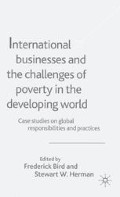Abstract
Measured by modem economic standards, Vietnam has been very poor throughout its history. Its largely agrarian economy did not permit the accumulation of surpluses which would have fuelled economic development. While handicrafts and small-scale industry certainly did thrive, economic development in the Western sense began only after the mid-nineteenth century, under the impetus of French colonialism. Subjected to colonial exploitation, and then Soviet-style socialist development, Vietnam achieved a per capita income of only US$94 in 1981. This figure rose to US$138 by 1991, by which point some 70 per cent of its population still fell under the poverty line. Another decade later, however, its per capita income climbed to more than US$400, and the Vietnamese government claims that the percentage of people beneath the poverty line was halved, to 32 per cent.1
Access this chapter
Tax calculation will be finalised at checkout
Purchases are for personal use only
Preview
Unable to display preview. Download preview PDF.
References
Dalton, J. R., Pham Minh Hac, Pham Than Nghi and Nhu-Ngoc T. Ong (2003) ‘Social Relations and Social Capital in Vietnam: The 2001 World Values Survey’, Comparative Sociology, vol. 1(2) January.
Duc, H. (2001) ‘US Pact Prompts Nike to Expand Local Shoe Output’, Vietnam Investment Review, 3 December.
Duiker, W. J. (1995) Vietnam: Revolution in Transition, 2nd edn (Boulder, CO: Westview).
Freeman, D. B. (1996) ‘Doi Moi Policy and the Small-Enterprise Boom in Ho Chi Minh City, Vietnam’, The Geographical Review, vol. 86(2) April, pp. 178–97.
IMF/IDA (2002): International Monetary Fund/International Development Association, ‘Vietnam: Joint Staff Assessment of the Poverty Reduction Strategy’, 6 June [online document] http://www.imf.org/external/np/jsa/2001/vnm/eng/032201.pdf, accessed 30 September 2003.
Levine, J. J. (1998) ‘Untapped Potential’, Vietnam Business Journal (January/February) http://www.viam.com/april98/coverstory.html
McMillan, J. and Woodruff, C. (1999) ‘Dispute Resolution with Courts in Vietnam’, Journal of Law, Economics and Organization, vol. 15 (October), pp. 637–58.
MPDF (1997): Mekong Project Development Facility, The Emerging Private Sector and the Industrialization of Vietnam, Private Sector Discussions, Number 1 (Hanoi).
MPDF (1999): Mekong Project Development Facility, Vietnam’s Undersized Engine: A Survey of 95 Larger Private Manufacturers, Private Sector Discussions, Number 8 (Hanoi).
Putnam, R. D. (2000) Bowling Alone: the Collapse and Revival of American Community (New York: Simon & Schuster).
Ronnas, P. and Ramamurthy, B. (eds) (2001) Entrepreneurship in Vietnam: Transformation and Dynamics (Copenhagen: NIAS Publishing).
Seragelden, I. and Grootaert, C. (2000) ‘Defining Social Capital: An Integrating View’, in P. Dasgupta and I. Serageldin (eds), Social Capital: A Multifaceted Perspective (Washington, DC: World Bank), pp. 43–65.
SRVN (2002): Socialist Republic of Vietnam, ‘The Comprehensive Poverty Reduction and Growth Strategy (CPRGS)’ (Hanoi, May 2002) International Monetary Fund [website] (n.d.) http://www.internationalmonetaryfund.com:80/external/np/prsp/2002/vnm/01/index.htm, accessed 30 September 2003.
Tran, A. N. and Smith, D. (1997) ‘Cautious Reformers and Fence-breakers: Vietnam’s Economic Transition in Comparative Perspective’, Humboldt Journal of Social Relations, vol. 24, pp. 51–100.
Truong, T. N. (2000) Trong Nghia, Vice President, Foreign Trade and Investment Center, Interview, 30 March.
World Bank (2001) Pillars of Development: Vietnam 2010: Vietnam Development Report 2001 (Hanoi: Vietnam Development Information Center).
World Bank (2002) ‘Vietnam: Delivering on Its Promise: Development Report 2003’, Report 25050-VN by the Poverty Reduction and Economic Management Unit, East Asia and Pacific Region, World Bank [website] (updated 21 April 2003) http://www.worldbank.org.vn/topic/vdr2003.htm, accessed 29 September 2003.
Editor information
Editors and Affiliations
Copyright information
© 2004 Stewart W. Herman
About this chapter
Cite this chapter
Herman, S.W. (2004). A Short Economic History of Vietnam, 1945–1986. In: Bird, F., Herman, S.W. (eds) International Businesses and the Challenges of Poverty in the Developing World. Palgrave Macmillan, London. https://doi.org/10.1057/9780230522503_9
Download citation
DOI: https://doi.org/10.1057/9780230522503_9
Publisher Name: Palgrave Macmillan, London
Print ISBN: 978-1-349-51533-2
Online ISBN: 978-0-230-52250-3
eBook Packages: Palgrave Business & Management CollectionBusiness and Management (R0)

